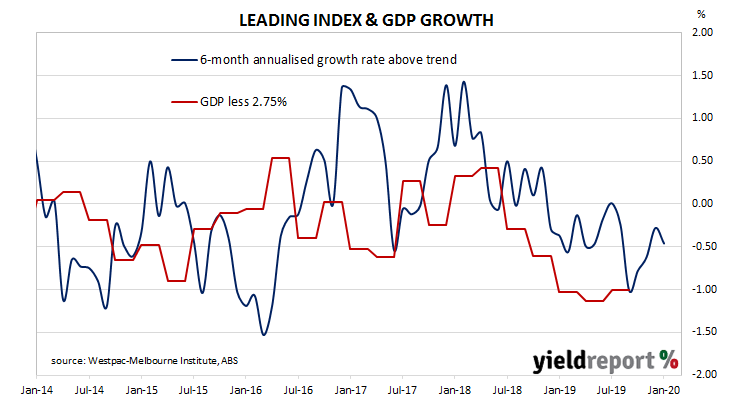Westpac and the Melbourne Institute describe their Leading Index as a composite measure which attempts to estimate the likely pace of Australian economic activity over the next three to six months. After reaching a peak in early 2018, the index headed lower through 2018 and most of 2019. Recently, it had staged a modest recovery.
The latest six month annualised growth rate of the indicator has fallen from December’s revised figure of –0.28% to -0.46% in January. The current reading ends a recent string of increases and it leaves the index’s growth rate entrenched in the sub-trend territory.
Westpac chief economist Bill Evans has not changed his forecasts for GDP growth in 2020 over the past few months, restating his view “that growth will remain around a 2% pace in the first half of 2020.” However, he has revised Westpac’s March quarter growth forecast from 0.5% to zero as a result of the effects from bushfires in January and, more recently, the coronavirus.
Index figures represent rates relative to trend-GDP growth, which is generally thought to be around 2.75% per annum. The index is said to lead GDP by three to six months, so theoretically the current reading represents an annualised GDP growth rate of around 2.25% in mid-2020.

